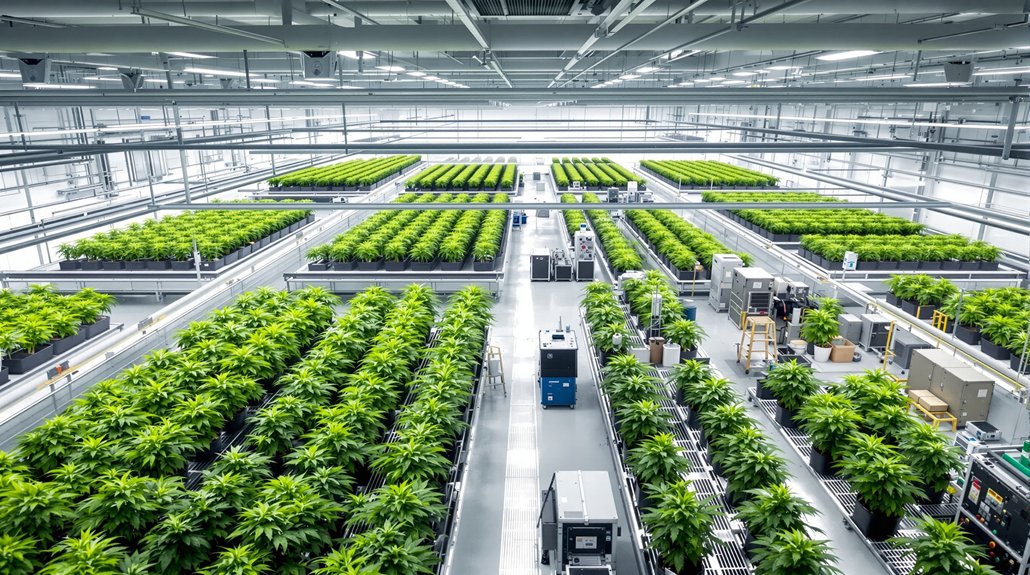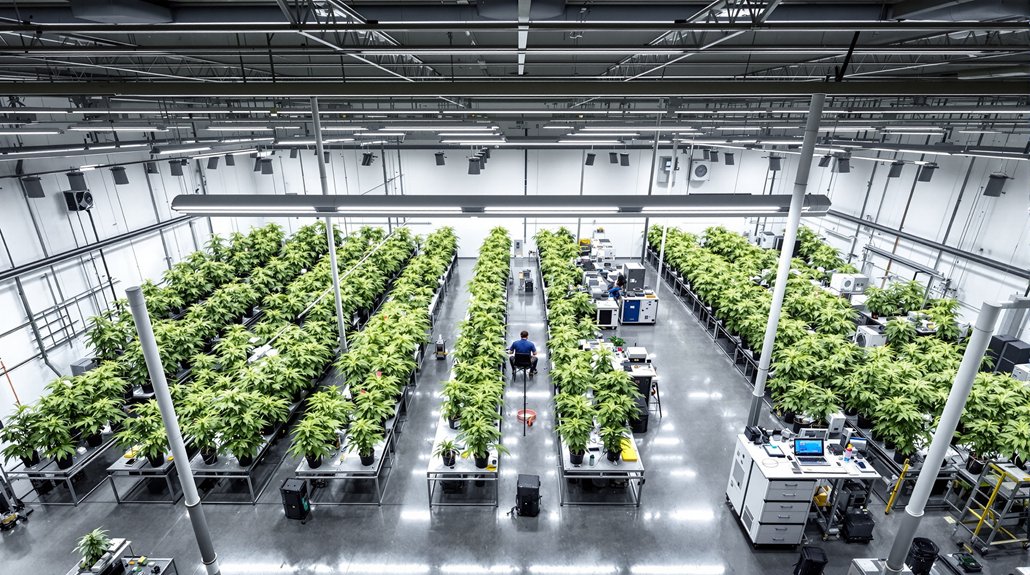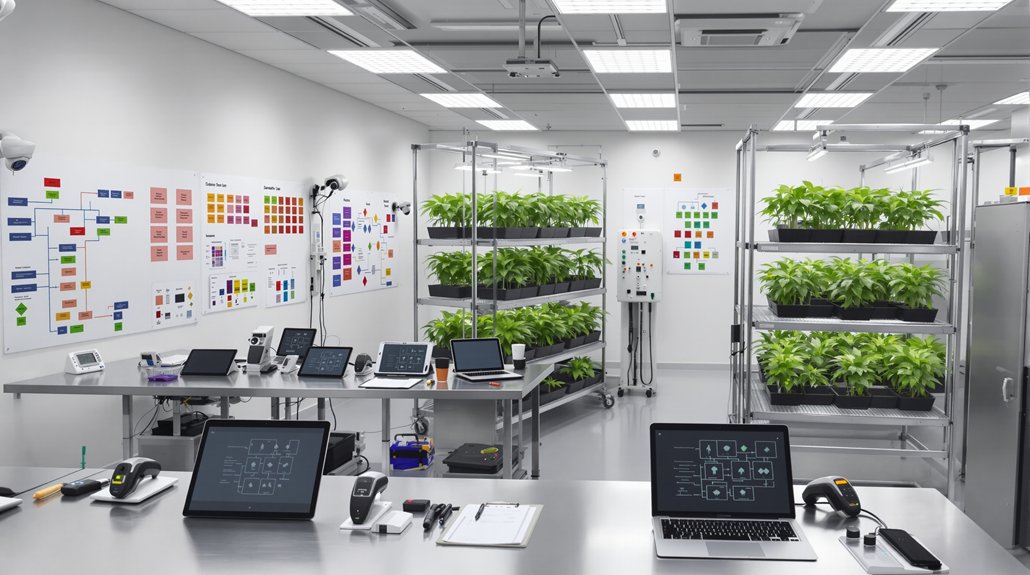The cannabis cultivation industry faces unprecedented challenges in building skilled operational teams, as traditional agricultural hiring practices fall short in this specialized sector. Legal cannabis operations require staff who understand both advanced horticultural techniques and strict regulatory compliance frameworks, creating a unique talent pool that remains difficult to source and retain. Most cultivation facilities struggle with high turnover rates, inadequate training protocols, and compensation structures that fail to attract experienced professionals. The consequences of poor staffing decisions extend far beyond productivity concerns.
Essential Roles and Responsibilities in Cannabis Cultivation Operations

Success in cannabis cultivation depends heavily on assembling a well-structured team where each member understands their specific role and responsibilities within the operation.
The cultivation manager oversees all growing activities, develops strategic plans, and guarantees regulatory compliance while managing budgets and staff. Experienced cultivation directors can earn top-tier salaries exceeding $200,000 annually based on their expertise and facility size.
Section growers supervise specific grow areas, coordinate labor scheduling, and maintain equipment while monitoring plant health.
Plant technicians handle daily maintenance tasks including watering, feeding, and cleaning while following strict protocols. These entry-level positions provide valuable hands-on experience with practical aspects of cannabis cultivation including environmental monitoring and general facility maintenance.
The post-harvest manager coordinates trimming, drying, and curing operations while tracking inventory and managing quality control.
Finally, compliance and quality teams ensure operations meet regulatory standards, monitor safety protocols, and conduct audits to maintain consistent product standards.
Strategic Hiring Practices for Cannabis Growing Teams
While cannabis cultivation operations depend on skilled personnel to maintain quality and compliance, building an effective growing team requires strategic hiring practices that go far beyond traditional agricultural recruitment.
Successful operations begin with detailed job descriptions that clearly outline technical competencies, regulatory knowledge, and cultural fit requirements for each cultivation role.
Effective recruitment utilizes multiple channels, including cannabis-specific job boards, industry networks, and partnerships with vocational training programs to maximize candidate diversity. Transferable skills from industries like agriculture, banking, and pharmaceuticals should be actively explored when evaluating potential candidates.
Background screening and compliance verification remain mandatory, as all hiring practices must align with evolving state and federal regulations.
Structured interviews incorporating practical assessments test real world capabilities, while multi-round selection processes guarantee quality hires. Given the rapidly expanding cannabis market, operations must develop comprehensive talent pipelines to meet continuous staffing demands.
Strategic onboarding programs accelerate productivity and reduce turnover, creating lasting value for cultivation operations.
Candidates should be assessed for their ability to thrive under regulatory pressure and adapt to the industry’s constantly changing compliance landscape.
Compensation Structures and Salary Benchmarks for Cultivation Staff

As cannabis cultivation operations compete for skilled talent in an expanding market, compensation structures have evolved beyond traditional agricultural pay scales to reflect the specialized knowledge and regulatory compliance requirements of the industry.
Salaries have increased 20-50% compared to pre-pandemic levels, with experience weighing more heavily than formal education in determining pay rates.
Cultivation Directors can earn $100,000-$200,000 annually, while Cultivation Managers receive $80,000-$125,000. Mid-level Supervisors average $49,961, and Growers earn approximately $50,000-$61,700. The cultivation workforce shows a notable gender distribution with 66.7% male and 33.3% female representation across supervisor-level positions.
Entry-level positions include Trimmers at around $17-$18 hourly and Packagers at $16. Despite competitive wages, only 38% of employees feel they are adequately compensated for their contributions to operations.
Modern compensation packages frequently incorporate performance incentives tied to yield targets, quality metrics, and production quotas.
Long-term benefits such as stock options, profit sharing, and milestone bonuses complement base salaries, reflecting the industry’s growth trajectory toward a projected $176 billion global market by 2030. The predominance of cash transactions in the industry affects how cultivation staff are compensated due to limited banking services for cannabis businesses.
Building Effective Organizational Hierarchy and Reporting Systems
Establishing a well-defined organizational hierarchy forms the foundation of successful cannabis cultivation operations, where clear reporting structures directly impact production efficiency, regulatory compliance, and team coordination.
Effective organizational charts begin with top-level executives and owners, followed by department heads including head growers, compliance officers, and operations managers. These visual displays outline roles, reporting lines, and decision making authority throughout the cultivation facility.
Organizational charts provide essential visual frameworks that define authority structures, clarify reporting relationships, and establish decision-making hierarchies within cultivation facilities.
Clear role definition prevents overlap and confusion, ensuring management teams maintain responsibility for compliance, quality control, and workforce execution. Routine staff training on regulatory updates ensures cultivation teams remain compliant with evolving cannabis industry standards.
Middle-management positions, such as assistant managers and supervisors, bridge gaps between upper management and line staff while maintaining realistic spans of control. Documented organizational structures facilitate the onboarding and training of new cultivation staff by providing clear expectations and role clarity from day one.
Direct reporting lines establish formal communication channels, supporting structured meetings and status updates that facilitate both upward and downward information flow across departments. Continuous evaluation of the organizational structure ensures ongoing effectiveness as cultivation operations scale and evolve.
Compliance Management and Staff Development Programs

Strong organizational hierarchies require robust compliance frameworks and systematic staff development to maintain operational integrity within cannabis cultivation facilities. Effective compliance programs establish thorough internal controls, documented standard operating procedures, and automated tracking systems for seed-to-sale inventory management.
Regular risk assessments and compliance audits identify operational gaps, while meticulous record-keeping guarantees traceability from cultivation through final product distribution. Advanced security technologies protect cultivation assets and personnel while ensuring adherence to regulatory requirements.
Staff development programs provide ongoing compliance training, accessible reference materials, and regular competency evaluations. Clear communication channels connect compliance leaders with all team members, establishing accountability measures and transparent reporting structures.
Professional development opportunities, including external workshops and certification programs, enhance staff expertise while systematic performance assessments identify areas requiring additional coaching. Compliance-focused operations should implement entity separation strategies to mitigate the impact of IRS Section 280E restrictions on business expense deductions. Comprehensive software solutions like GrowerIQ consolidate various compliance functionalities into integrated platforms that streamline cultivation management and regulatory reporting processes. These integrated approaches create proactive compliance cultures that adapt effectively to evolving regulatory requirements.









